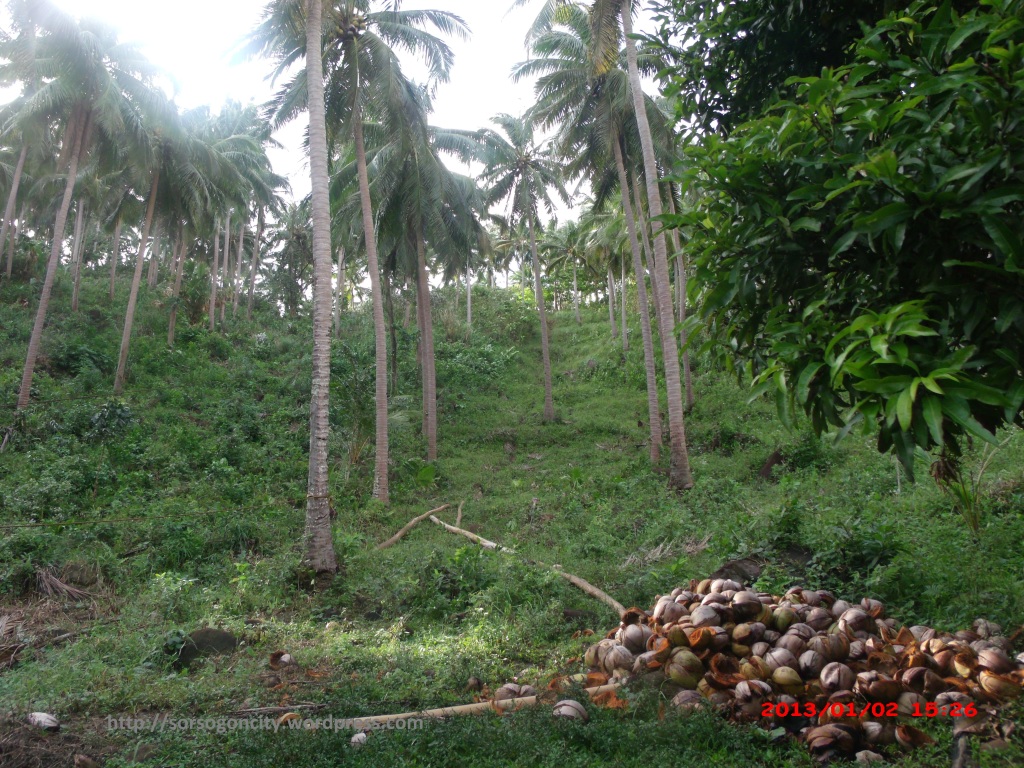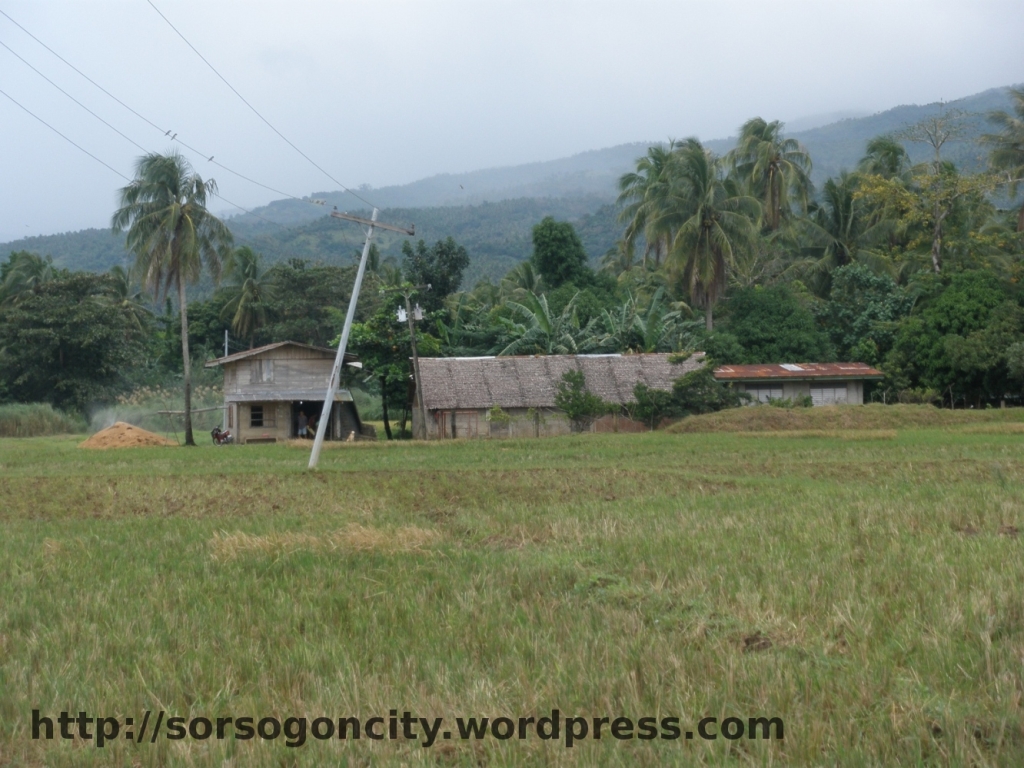Since we moved to the province 2 years ago, I have been curious how the agricultural industry works. Back in my school days, one of my classmates who worked in a micro credit organization told me that it was very difficult to help the farmers because they are beholden to their creditors, who also serve as the middlemen for the formers’ agricultural products. I also heard stories about farmers who would pawn their rice land and never able to get it back. One of my relatives told me that once farmers pawn their land or any of their belongings, it’s really tough for them to take it back. Instead they will sell it eventually.
There was this fishing boat owner who couldn’t choose which fish to buy – apparently, the catch for the day has been contracted already and it’s his own boat!
Manual Labor
Agriculture is labor intensive. For coconut farmers, they have to prepare the produce before they could sell the copra – mabunot, ma agon, matingkal. These are done by manual labor. To maximize the production of copra, agonan (place where coconut meat are smoked) are located near the farm. This way, the produce being transported are the finish products.


For rice farmers, it’s also back breaking job from preparing the land, planting and maintaining it. One planting season, my daughter, my niece and myself joined the farmer plant rice in a small plot. Just doing it for 15m was a struggle already, not even counting the sun burning your skin.
Of course, there’s an option to rent mechanized equipment, but you have to wait for your turn or you have to pay. If one is a registered farmer in the city, you get to have discounted bill for some of this mechanized equipment.

20 years ago, I was doing part time trainer position in a local computer school. One time, I asked the students how many have farmer-parents – majority raised their hands. That told me the future of the agriculture in Sorsogon and nearby towns.
Nowadays, tenants that I talked to and even our own household, it’s difficult to get manual laborers. They prefer to be employed in the malls or stores. This is understandable if you compare the earnings versus the daily effort to get by.
Peter Paul Philippines Corp. (PPPC)
With PPPC, farmers now have an option to sell the whole coconut (book) than producing copra. The said Cabid-an factory gets its coconut supply from as far as Masbate or Visayas area. It pays premium for organic coconuts. The rejects go to the copra production line. Though this can be advantageous for farmers, it also affected the local households because the factory pays more premium than the small market sellers; plus, the latter pays later than the said factory according to the grapevine.
PPPC seems to change the coconut market in the province. Aside from being another market for farmers, it also generated local jobs. It even gets its fuel (coconut shell or paya) from the dealers and farmers. Now you know why paya na uring (coco shell charcoal) is expensive nowadays.
However, farmers or tenants cannot go and sell directly to the PPPC unless they are credited. Which is mostly large dealers. Smaller dealers and farmers can piggy back on accredited entities, but this can mean smaller profit for the former. Or simply, the farmers sell their coconut directly to the dealers and do away with tedious logistics.
Virtual Pawn Shop
When a rice field or agricultural land is pawned, the produce goes to whoever the land was pawned to. Though I am not sure who pays for the labor and the related logistics. But still, if this is the arrangement, it will just become a vicious cycle until the farmer decides to sell his land altogether. On a business sense, it’s advantageous to the other party but the odds are against the farmers.
The sad part of this is that the most common reasons for pawning the land is due to short household budget and not exactly for additional investment. One reason was one of the sons was getting married (though this was a happy ending – they got their land back); another was to celebrate the birthday of one of the farmer’s kids. In some instances, the budget for the next planting season wasn’t enough, especially when typhoon devastated the rice field.
Weather, Typhoon and Pests
The kuhol was supposed to be a supplemental diet for Filipinos. It was one of the programs of Imelda Marcos to augment the protein diet of the Filipinos, but eventually devastated rice fields. They multiply quickly and love to eat rice stalks! Of course, it’s easy to say that the farmers can simply spray pesticide, but it’s not just expensive but there’s untindended consequence on the soil quality. It’s not the soil, but also the ecosystem poisoning some living organisms. I remember there was a time that kuhol was bought by the bucket, though I am not sure if this is still a practice. There was a time that the shells were thrown on the highway.
Sorsogon is at the middle of the typhoon belt. When a typhoon hits coconut farm, it takes 4 or 5 years for the next harvest. This is quite difficult for coconut farmers who only depend on such produce. Or if there’s a lot of felled coconut trees, the farmers have to replant – another back breaking job and also would need additional investment.
Heavy rain can devastate rice field, especially when about to harvest. I’ve seen this first hand – one portion of the rice field was devastated by heavy rain that it couldn’t be harvested anymore.
Accessibility of Storage and Drying Facilities
Palay or unhusked rice need to be dry before taking it to the rice mill. Thus, drying area is quite important after the harvest or if it’s rainy season. My father-in-law would bring his palay to kiosko in capitol grounds to dry his harvest – it’s a first come, first serve basis. Though outlawed, some are still drying their palay in the highway or any nearby roads; worse, they would put barriers that could endanger motorists! I know government constructed drying facility but may not be accessible to all farmers.
The storage of agricultural produce is another. Large dealers can afford to store their produce for a period of time since they have the capital. This is common when there’s a price drop – just wait for it to go up, then sell the produce. However, for farmers who worries for the next planting season, he would prefer he could sell his produce on a higher price the soonest possible time. But if the prices are low, and the farmers have no storage facility, he has no better option than to sell it on a lower price or even losing profits along the way just to get cash for the next planting season.
Government Assistance
LGUs and the national governments offer several assistance. One time, I visited the city LGU and explained to me how assistance can be availed upon. They offer discounted prices for seeds and equipment. They give free training and other subsidies.
While filling up a form, one farmer showed up and asked for another supply of fertilizer. That week was raining very hard. Apparently, on a small window that the sun was up, he applied the government supplied fertilizer; but on the next day, it rained hard washing off the fertilizer. The LGU personnel was very accommodation and explained that the farmer have to file a formal (written with pictures of the plots that have had fertilizers) request. The farmer is located in Brgy. Abuyog. Emails are not recognized as official request.
When we also visited the local branch of a national agency, they were also giving free organic fertilizers to the coconut farmers. The only caveat, you have to go to their office to register. Looking at the size of the office, I am not confident the said agency has the capacity to visit every coconut farmer in the city on annual basis.
Author’s Perspective
When I was planning about this article, I was trying to figure out what’s the systemic issue of the agricultural landscape, specifically the rice and coconut farmers. It’s more academic than anything else. While going around and meeting friends, I started asking around and one could get mad if the goal is to solve the different issues.
In fairness, there are numerous success stories in the agricultural sector. One just need to get inspiration from the news. But as they say, it’s easier said than done.
Nowadays, I just ensure that I buy produce from farmers directly as much as possible and I avoid negotiating if I could afford it.


This is great! Are you still in Sorsogon? It seems that the agricultural infra is still a challenge nowadays in the country. Mind if I ask what agency to talk to in terms of starting a coconut farm? Thanks!
You may want to visit PH Coconut Authority in Brgy. Pangpang, along the Sorsogon Diversion Road. The Provincial Agriculture Office is also a good start. These agencies offer some assistance with some requirements. Hope that helps.